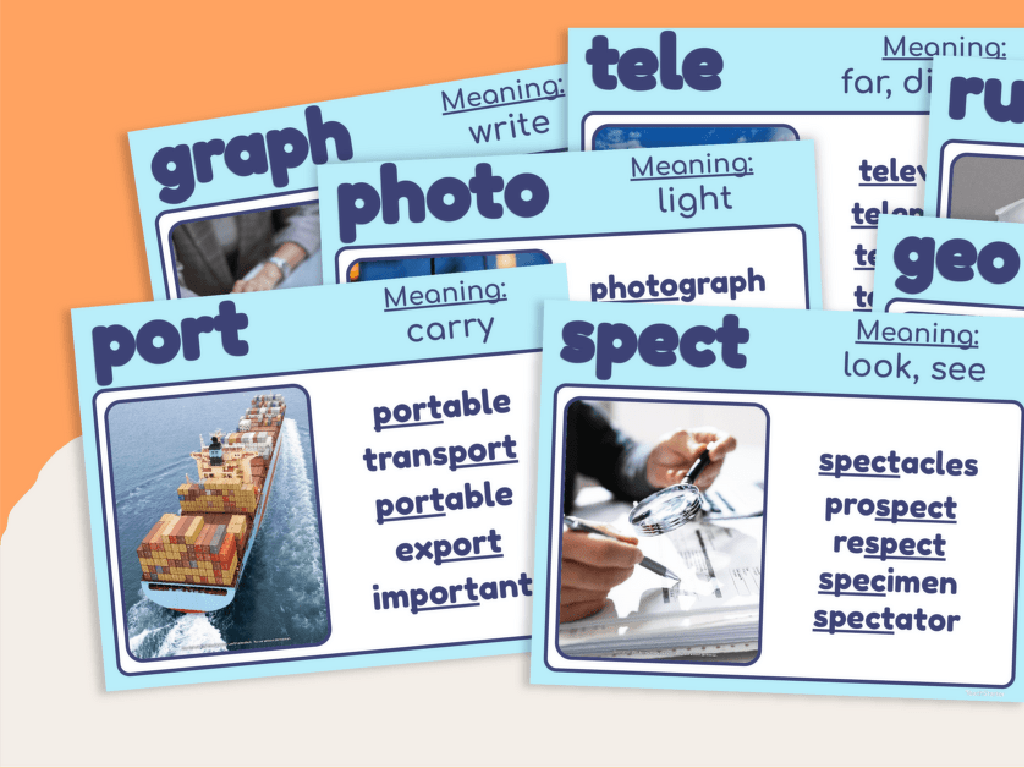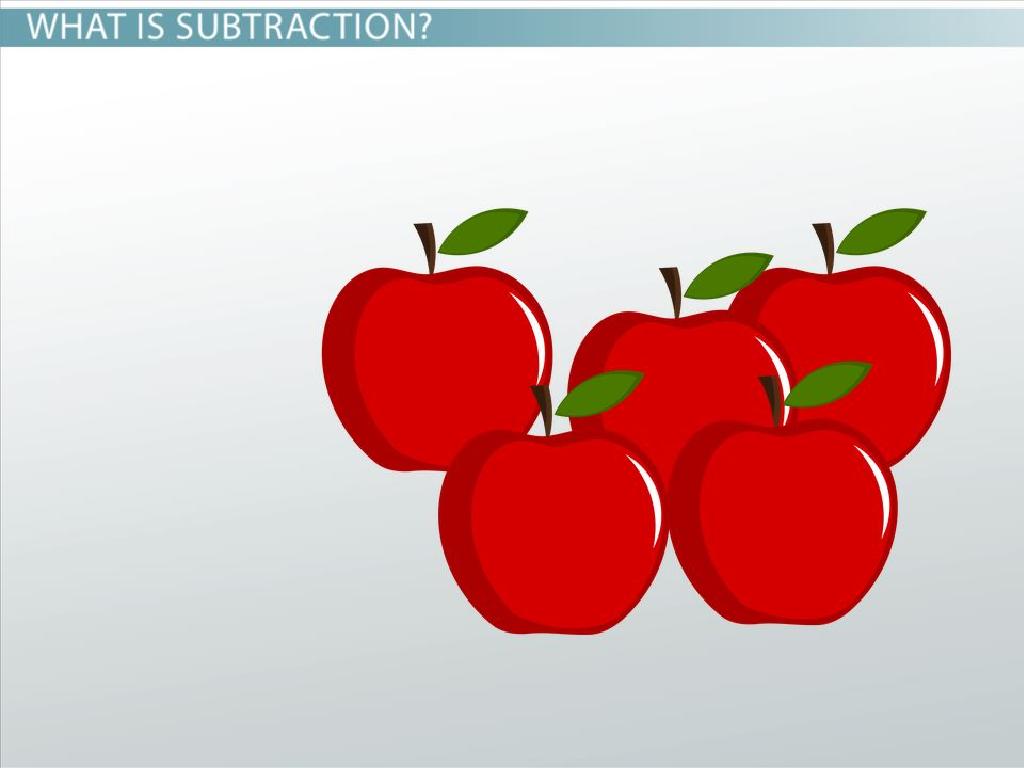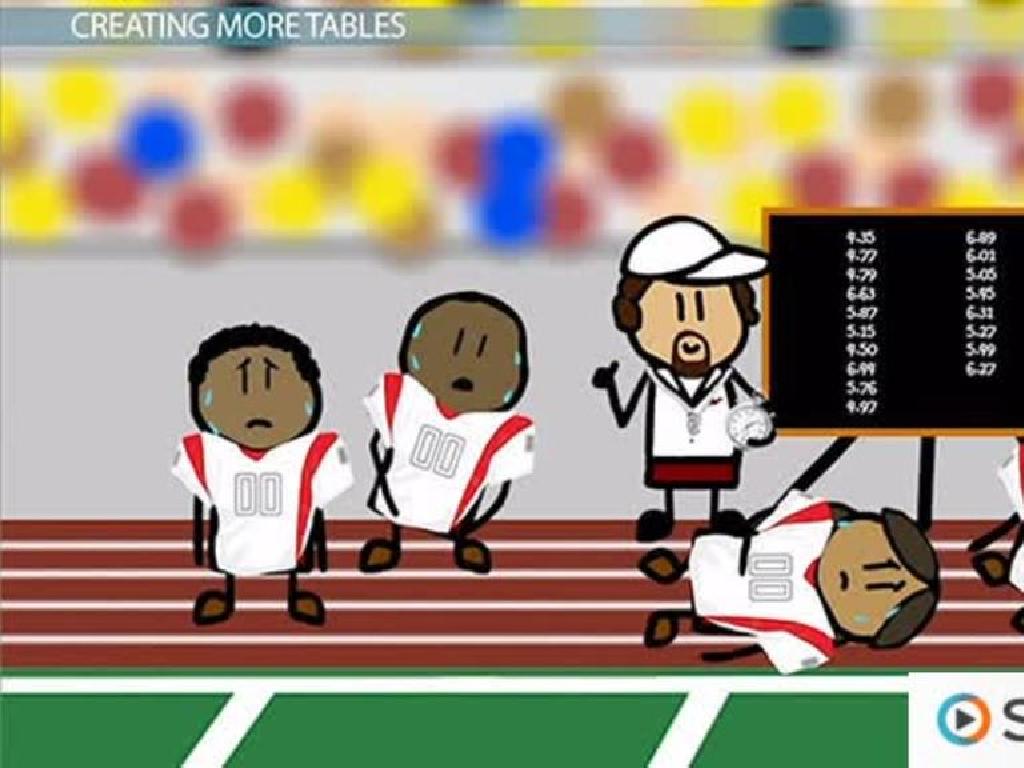Value Of A Digit - Up To Hundreds
Subject: Math
Grade: Second grade
Topic: Place Value
Please LOG IN to download the presentation. Access is available to registered users only.
View More Content
Welcome to Place Value!
– Every digit has a value
– A digit’s value depends on its position
– Place value in numbers
– Ones, tens, and hundreds places
– Why place value matters
– Helps us read and write big numbers
– Place value up to hundreds
– 100s place is 10 times 10s place
|
This slide introduces the concept of place value, which is fundamental in understanding how numbers work. Explain that the value of each digit in a number depends on its position or ‘place’ within the number. Illustrate with examples, such as the difference between the ‘2’ in 20 and the ‘2’ in 200. Emphasize that place value helps us determine the size of a number and is essential for performing math operations like addition and subtraction. Use visual aids like blocks or charts to represent ones, tens, and hundreds places. Encourage students to practice by identifying the place value of digits in various numbers up to the hundreds place.
Understanding Digits in Place Value
– Digits: Numbers’ building blocks
– Only 10 digits exist: 0-9
– These are all the digits we use in math.
– Every number is a combination
– Like 24 is made of 2 and 4.
– Digits have different values
– In 130, ‘3’ in the tens place is worth 30
|
This slide introduces the concept of digits to second-grade students, explaining that digits are the fundamental elements of all numbers. Emphasize that there are only 10 digits, and every number they see or use is made up of a combination of these digits. Highlight that depending on where a digit is placed in a number, its value can change; this is the basis of place value. For example, in the number 130, the ‘3’ is not just three but thirty because it is in the tens place. Use simple examples to illustrate this point and prepare to demonstrate with physical manipulatives or drawings in the next class.
Understanding the Ones Place
– ‘Ones’ place value
– It shows the count of single units
– Rightmost digit in a number
– Always look at the last digit
– Example: Number ‘5’
– ‘5’ has 5 ones, or 5 single units
|
This slide introduces the concept of the ‘Ones’ place, which is fundamental to understanding place value. The ‘Ones’ place is the rightmost position in a number and represents how many single units are present. For example, in the number ‘5’, the ‘Ones’ place is occupied by 5, indicating there are five single units. It’s important for students to recognize that regardless of how large a number is, the ‘Ones’ place always refers to the rightmost digit. Use simple, clear examples to illustrate this concept, and encourage students to practice with different numbers to identify the ‘Ones’ place.
Understanding the Tens Place
– Tens place in a number
– It’s just to the left of the Ones place
– Counts groups of ten
– Like bundles of ten sticks
– Example: Number 30
– 3 tens means 3 groups of 10
– Practice with different numbers
|
This slide is aimed at helping second-grade students understand the concept of the tens place in a two-digit number. Begin by explaining the position of the tens place and its significance in determining the value of a number. Use physical objects like bundles of sticks or blocks to visually demonstrate groups of ten. For the example, show the number 30 and explain that the ‘3’ in the tens place represents three groups of ten, which equals thirty. Encourage students to practice with different numbers, identifying the tens and ones places, and counting how many tens are in each number. This will solidify their understanding of place value up to the hundreds.
Understanding the Hundreds Place
– The Hundreds place in numbers
– It’s to the left of the Tens place
– It shows groups of one hundred
– Like having 100, 200, 300 blocks
– Example: Number ‘200’
– ‘200’ has 2 hundreds, 0 tens, 0 ones
– Counting hundreds in numbers
– Practice with different numbers
|
This slide introduces the concept of the hundreds place in a three-digit number. Explain that the hundreds place is the third digit from the right and it represents how many sets of one hundred are in the number. Use physical objects like blocks to demonstrate groups of one hundred, which can help students visualize the concept. The example ‘200’ illustrates that there are 2 sets of one hundred, no tens, and no ones. Encourage students to practice identifying the hundreds place with various numbers and to understand its value in the context of the entire number. This foundational understanding will be crucial as they progress in their mathematical learning.
Building Numbers with Place Value
– Every number is made of ones, tens, and hundreds
– Ones are single units, tens are groups of 10, hundreds are groups of 100
– Let’s construct the number 256
– 2 in 256 is worth 200 because it’s in the hundreds place
– 2 hundreds, 5 tens, and 6 ones equals 256
– 5 in 256 is worth 50 because it’s in the tens place, 6 is just 6 because it’s in the ones place
|
This slide is aimed at helping second-grade students understand the concept of place value up to hundreds. Start by explaining that all numbers are made up of ones, tens, and hundreds. Use the number 256 as an example to show how each digit has a different value depending on its position. The 2 represents 200 because it is in the hundreds place, the 5 represents 50 because it is in the tens place, and the 6 represents 6 ones. Use manipulatives like blocks or drawings to visually demonstrate the concept. Encourage students to build other numbers using this method to reinforce their understanding.
Understanding Place Value: The Value of Digits
– Practice with an example: 172
– Identify the value of digit 7
– The 7 is between the 1 and the 2
– 7 in the Tens place equals 70
– Because 7 is in the Tens place, it’s worth 7 Tens or 70
– Why place value matters
– Place value tells us the value of a digit based on its position
|
This slide is aimed at helping second-grade students practice the concept of place value, specifically understanding the value of digits in different positions up to hundreds. Start by presenting the number 172 and ask students to identify the value of the digit 7. Explain that because the 7 is in the Tens place, it represents 70, not just 7. Emphasize that the position of a digit in a number changes its value, which is a fundamental concept in place value. Use additional examples if needed and encourage students to explain the value of other digits in the number as well.
Understanding Zero’s Role in Place Value
– Zero as a placeholder
– Zero shows an empty place, like an empty chair in musical chairs.
– Zero in the number 205
– In 205, zero means there are no tens, just like having no apples in a basket.
– Keeping places aligned
– Zero helps us make sure each digit is in the right column, like keeping books in the right order on a shelf.
|
This slide aims to help students understand the importance of zero in place value. Zero acts as a placeholder, indicating the absence of a value in a particular place. For example, in the number 205, the zero indicates that there are no tens, which is crucial for maintaining the correct value of the other digits. It’s like having an empty space in a game of musical chairs, showing that something is missing. Zero also ensures that all digits are properly aligned in their respective places, much like keeping books organized on a shelf. Encourage students to think of zero as a helpful tool that keeps numbers in order and easy to read.
Class Activity: Building Numbers with Place Value Blocks
– Understand place value blocks
– Pair up and build numbers
– Work together to make numbers using blocks
– Discuss the value of each digit
– Each digit has a value based on its position
– Present your numbers to the class
|
This activity is designed to help students grasp the concept of place value in a tangible way. By using place value blocks, students can visually and physically construct numbers, which reinforces their understanding of how each digit has a different value depending on its position. Have the students work in pairs to encourage collaboration. They should create various numbers using the blocks and then discuss the value of each digit in their created number. For example, in the number ‘243’, the ‘2’ is worth 200 because it’s in the hundreds place. After constructing and discussing, each pair will present their number and explain the value of each digit to the class. This will help students learn from each other and solidify their understanding of place values up to hundreds.
Place Value Review: Up to Hundreds
– Congratulations on learning place value!
– Each place is 10 times the next
– The tens place is 10 times the value of the ones place
– Practice with place value blocks
– Use blocks to represent ones, tens, and hundreds
– Keep practicing at home!
|
This slide is a conclusion and review of our lesson on place value up to the hundreds place. Reinforce the concept that each place value is ten times the value of the place to its right, which is a fundamental principle in understanding place value. Encourage students to continue practicing with their place value blocks, which are a tangible way to represent and understand the concept of ones, tens, and hundreds. Remind them that practice is key to mastering place value, and doing so at home will help solidify their understanding. Provide some example exercises they can do with their blocks, such as building different numbers and breaking them down by place value.






